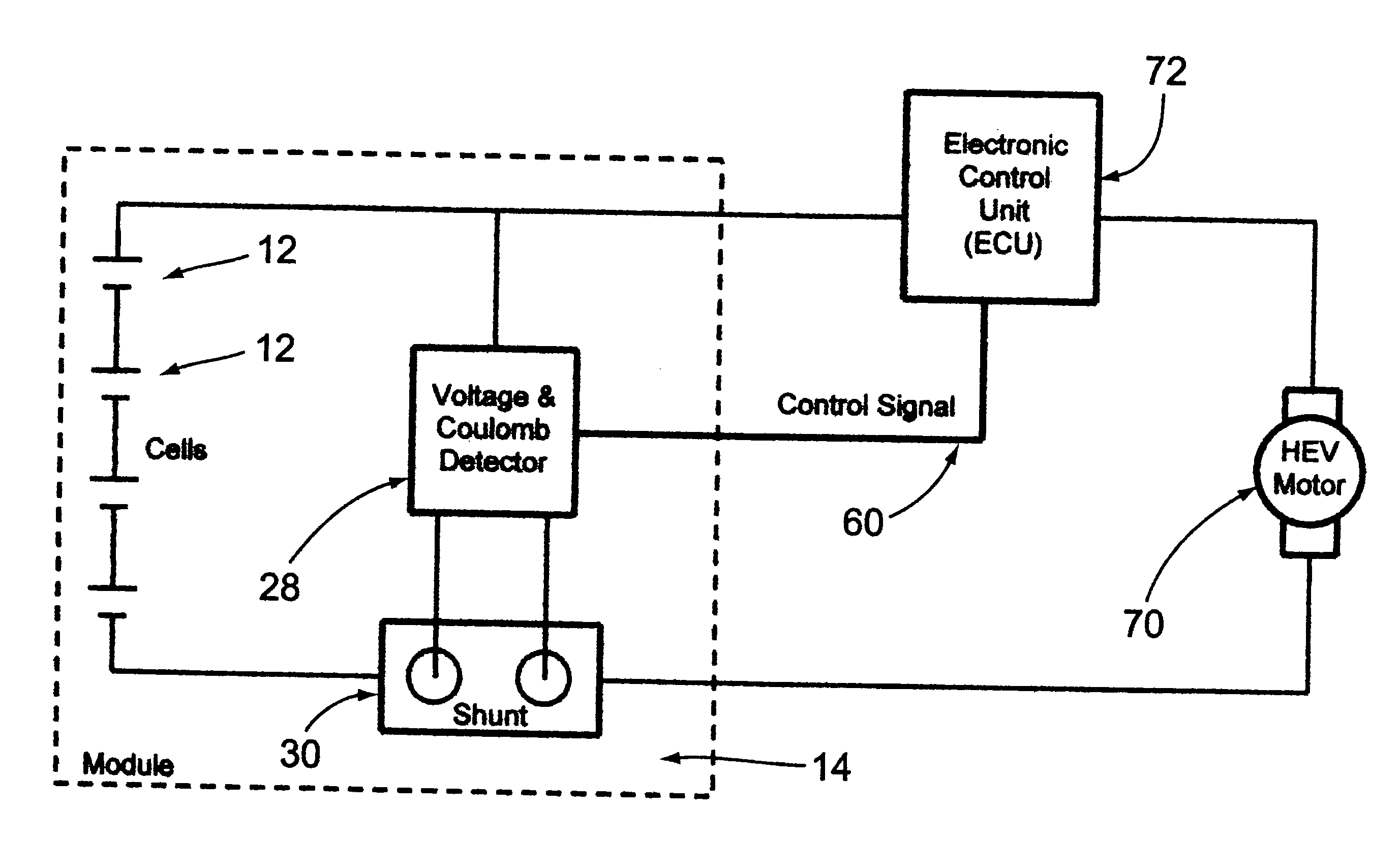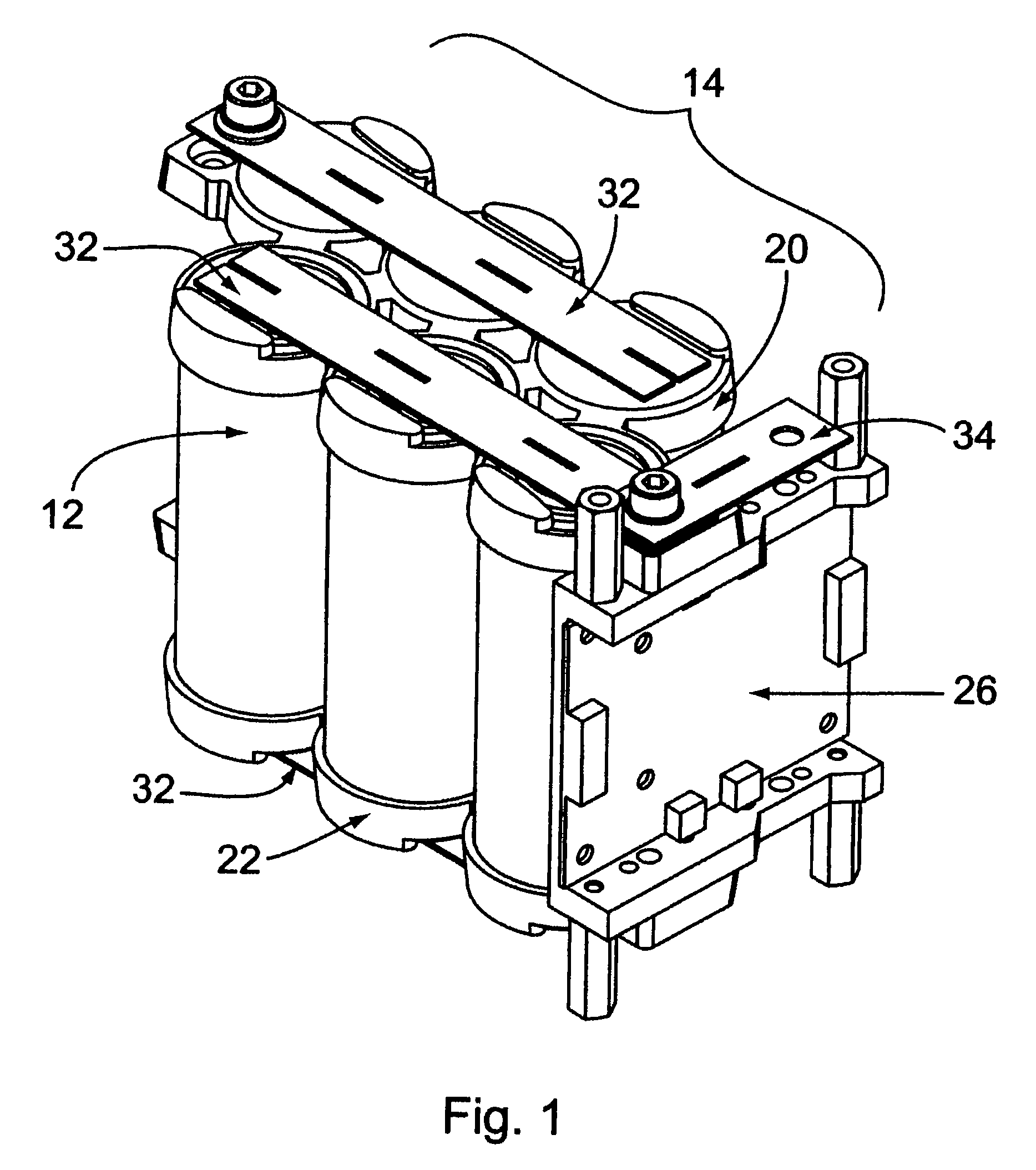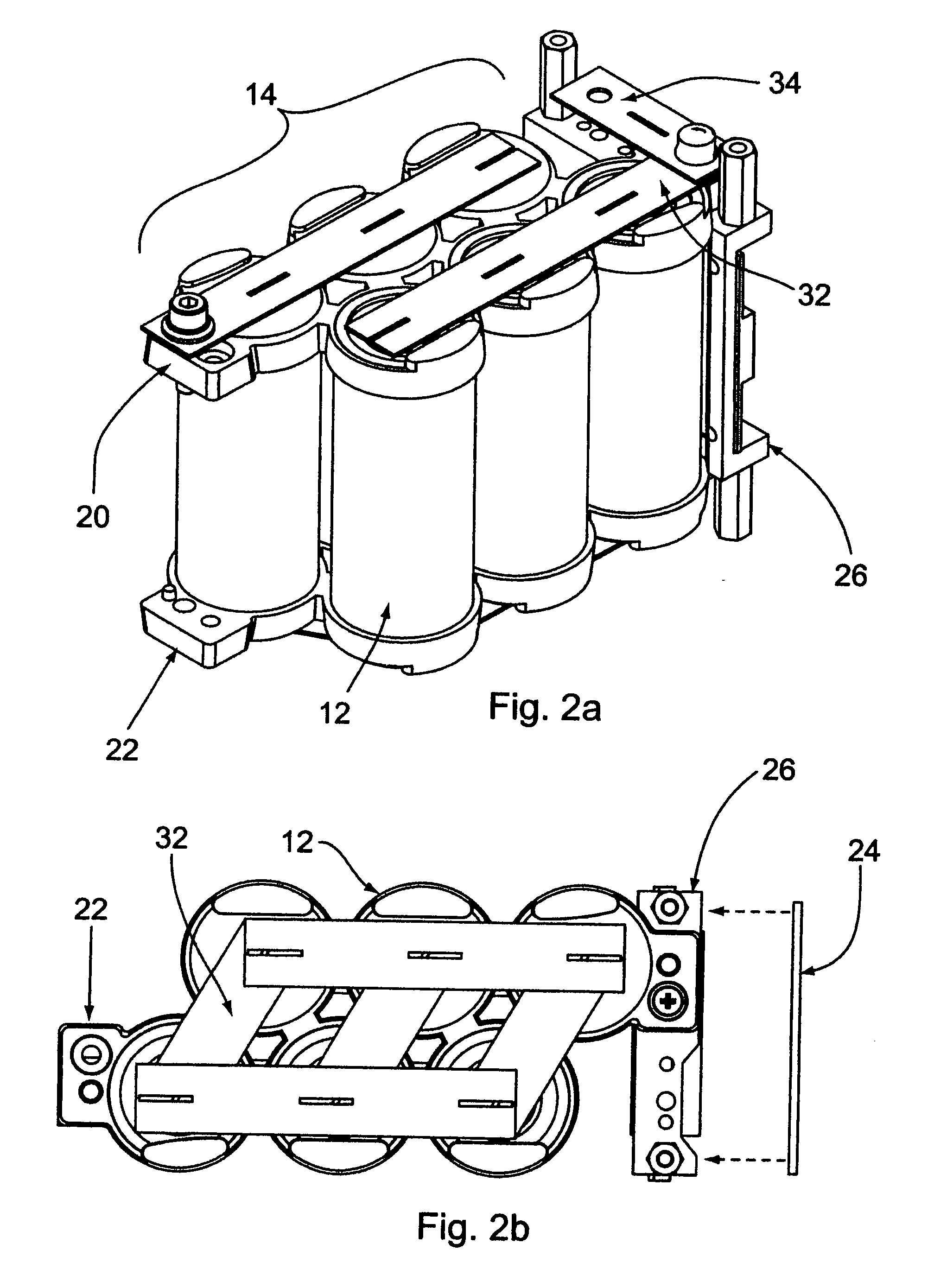Battery management system
a battery management and lithium ion technology, applied in the direction of batteries/cells, instruments, cell components, etc., can solve the problems of shortened cell lifespan, serious cell damage, and other potential hazards, and achieve the effect of reducing the risk of damage, reducing the life of the cell, and improving the service li
- Summary
- Abstract
- Description
- Claims
- Application Information
AI Technical Summary
Benefits of technology
Problems solved by technology
Method used
Image
Examples
Embodiment Construction
[0024]A battery management system (“BMS”) for optimizing energy usage and availability for a battery pack used in an HEV is described herein. The battery pack described in conjunction with the BMS is merely an illustrative example of a battery pack to which the BMS may be applied and utilized.
[0025]FIG. 1 shows an illustrative isometric view of a module 14 with a printed circuit board mounting plate 26. Modules 14 are comprised of a multiplicity of cells 12, held together between a top cap 20 and a bottom cap 22, which are electrically linked together by cell connectors 32, and to other modules 14 by intermodule connectors 34. As illustrated in FIGS. 2a and 2b, each module 14 in the exemplary embodiment considered herein has six cells. Each module 14 is monitored and regulated by means of electronic circuits on a PCB 24 (shown in FIG. 2b), which is affixed to a PCB mounting plate 26.
[0026]FIG. 2a shows an illustrative isometric rear view of the module 14 shown in FIG. 1, whereas FIG...
PUM
 Login to View More
Login to View More Abstract
Description
Claims
Application Information
 Login to View More
Login to View More - R&D
- Intellectual Property
- Life Sciences
- Materials
- Tech Scout
- Unparalleled Data Quality
- Higher Quality Content
- 60% Fewer Hallucinations
Browse by: Latest US Patents, China's latest patents, Technical Efficacy Thesaurus, Application Domain, Technology Topic, Popular Technical Reports.
© 2025 PatSnap. All rights reserved.Legal|Privacy policy|Modern Slavery Act Transparency Statement|Sitemap|About US| Contact US: help@patsnap.com



